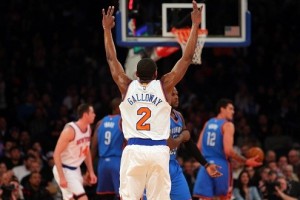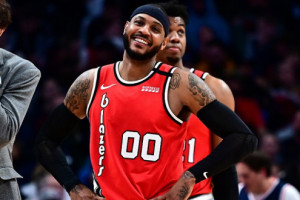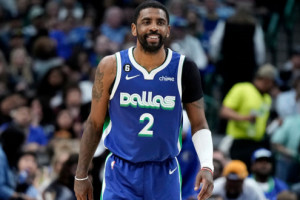Reverse Engineering: Volume 1

I’ve always been a huge proponent of going back and analyzing your previous lineups to see what you did right and where you could have improved. Finding your weaknesses and fixing them by reviewing what you did the night before can be a huge benefit to your DFS game, but it’s also very easy to ignore, since you’re usually so anxious to look forward to the next slate.
While I can’t analyze your lineups for you, what I can do is take a look at a successful lineup, and try to figure out why that player may have chosen to roster the players they did. When I first started playing daily fantasy, I would go back each night and compare my lineups to some of the best players in the industry to try and reverse engineer what they were thinking. The goal of this article is to do that for you, but I highly recommend giving it a try yourself, because it’s an excellent exercise that will absolutely sharpen your skills.
About a month ago I decided to make the leap to becoming a tournament-only daily fantasy player. Ever since I first started playing DFS, I followed the “cookie-cutter” setup of 80% cash games, 20% GPPs, using 10% of my bankroll each night. While that works for a lot of people, I’ve found that it just isn’t my style.
All of this to say that, for this article, I’m going to be breaking down a GPP lineup, and not a “safe” lineup that you would want to use in a cash game. In future articles, I will take a look at some cash lineups of top players throughout the industry, but for now I’m going to use the $500K Slam Dunk January Jam contest that ran on DraftKings Wednesday night.
So without further ado, let’s take a look at the winning lineup in that contest so we can all daydream about the “what ifs” of winning $100,000 playing DFS NBA.

Let’s break this down position by position. I’ll give you my thoughts as to why Chadg10 might have used each player, along with a few random tournament-based thoughts as we go.
Point Guard – Langston Galloway – $4,300

If you were going to win a big GPP on Wednesday, you needed to roster some studs. Obviously, in order to do that you have to find some value, but you have to be extremely careful when picking your value players. It’s extremely easy to find a cheap guy in a decent spot and think “Meh, he lets me fit my studs, so I’ll just plug him in and hope for the best.” But that line of thinking will certainly lead to your downfall in GPPs over the long run.
Over anything else, you’re looking for upside in large tournaments like this, and that upside is strongly tied to both player ability and price.
The Knicks are clearly done for the year, so it only makes sense that they want to give their young guys plenty of run to see what they have. Galloway was fresh off of signing a contract to extend him through the rest of the season, and he had been getting at least 30 minutes over his last few games. At $4,300 with a matchup against the seventh-best matchup for point guards in the Thunder, Galloway was a great bet to far exceed his measly price tag.
Shooting Guard – Monta Ellis – $7,100
This play is a great example of being contrarian with players that have the potential to blow up on any given night, but maybe is in a “less than ideal” matchup. A lot of people would look at a matchup with the Rockets and immediately write off Ellis since James Harden was the standout option, but Ellis has the tendency to go on huge scoring streaks that make him a great GPP play any night that the Mavs are in a competitive game.
Small Forward – Carmelo Anthony – $8,900

Small forward was an interesting position on Wednesday. A lot of people were excited to use LeBron James again and ride his hot streak of consecutive 50+ point games, but when news broke that he wouldn’t play a lot of people needed to shuffle around their lineups quite a bit. Meanwhile, there were a slew of tempting, cheap small forward just waiting to ruin your day (looking at you Paul Pierce and Wilson Chandler).
Outside of guys like LeBron, most people are scared to pay up at small forward, because they don’t tend to be quite as safe as other positions. This is another example of how going against the grain can be beneficial if you can find a guy who has the potential to rack up the stats and have a relatively low ownership percentage. Melo is always going to get his usage, and is a great bet for that double-double bonus on any given night, making him a great contrarian play against an Oklahoma City team that was without Kevin Durant that night.
Power Forward – Thaddeus Young – $6,400
Not every player you use has to be super contrarian. A good mix of “chalky” plays and against the grain picks are what you’re looking for when crafting a GPP team. Thaddeus isn’t necessarily a stud, but you can’t ask for a better matchup for power forwards than the Celtics, and he was ranked very highly on our NBA Expert Consensus Rankings, making him a great play in any format.
Center – Al Jefferson – $6,700
Al “Walking Double-Double” Jefferson is a great GPP play most nights on DraftKings. In general, I love to target big men who are likely to get double digit boards and get me that extra bonus that can make such a huge difference in a tournament finish.
San Antonio is a middle-of-the-pack matchup for centers, but Al Jeff is a monster, and with Kemba Walker out of the lineup, his usage rate goes up quite a bit. Predictably, he feasted, ripping down 16 rebounds and scoring 17 points to cap off a nice little dub-dub.
Guard – Kyrie Irving – $8,800

If I were to ever look for an example as to why you should sign up for our NBA Newsletter Alerts, this would be it. Here’s the alert that we sent out when the news of LeBron taking the night off hit:
“LeBron James is OUT. Kyrie Irving is the top overall play of the night now. Kevin Love and J.R. Smith both vault into cash game consideration.”
If you listened to that alert, you likely did pretty well in your contests Wednesday. Damian Lillard isn’t known as a great defender and Kyrie’s usage goes through the roof without LeBron in the lineup. No one could have predicted he’d drop 11 threes and 55 points, but he was obviously a great play with huge upside.
Forward – Nerlens Noel – $4,800
Noel is extremely frustrating to roster. His fantasy output completely relies on secondary stats, because on any night he could rack up 7 blocks, 6 steals, and 11 rebounds, but his scoring is extremely inconsistent. That inconsistency is exactly what makes him such a good GPP play, because he has the potential for a huge night, but not many people will have him because they’re too scared to take the chance.
Utility – Zach LaVine – $3,000
Paying attention to injuries is a massive part of success in DFS NBA. When Mo Williams was ruled out, LaVine became an instant starter, guaranteed to get a lot of run against a fast-paced Celtics team at home… for minimum price. It’s important to note that the $3,000 salary was not the only thing that made LaVine a good play, because we knew that the matchup and his past performances meant he had the potential to top 30 fantasy points.
Wrapping Up
Analyzing past results is one the most tedious ways to improve your daily fantasy game, but it can do wonders for your game if you really dedicate yourself to it. Hopefully this article will inspire you to look back at your lineups and ask yourself “Why did I take this player?” If you can’t come up with a solid reason, or if the reason doesn’t make sense in hindsight, take note and adjust when you build your next tournament lineup.